Have you ever looked up at the night sky and wondered about the vastness of the universe? The science of astronomy has been a driving force in our quest to understand the mysteries of the cosmos. From ancient civilizations gazing at the stars to the revolutionary discoveries of modern astronomers, the exploration of the universe has captivated our imaginations for centuries. In this article, we will delve into the rich history of astronomy, the tools and techniques used to observe celestial bodies, the inner workings of stars, the wonders of our solar system, the enigmatic nature of black holes, the vastness of galaxies and the expanding universe, the search for other worlds and extraterrestrial life, and the exciting future of space exploration. Join us on this journey through the science of astronomy as we unravel the secrets of the cosmos.
Contents
- The History of Astronomy
- Observing the Celestial Bodies
- The Inner Workings of Stars
- Exploring Our Solar System
- The Mystery of Black Holes
- Beyond Our Galaxy: Exploring the Cosmos
- Unveiling the Secrets of the Universe
- The Future of Astronomy
- Conclusion
-
Frequently Asked Questions
- 1. What is the oldest recorded astronomical observation?
- 2. Who was the first person to propose that the Earth revolves around the Sun?
- 3. How do astronomers study faraway objects in the universe?
- 4. What causes stars to die?
- 5. How do scientists classify different types of stars?
- 6. What is the Sun primarily composed of?
- 7. Are there planets outside of our solar system?
- 8. How do black holes form?
- 9. What is dark matter, and why is it called “dark”?
- 10. Can life exist on other planets?
- References
-
Frequently Asked Questions
- FAQ 1: Is astronomy the same as astrology?
- FAQ 2: How long has astronomy been studied?
- FAQ 3: How do astronomers observe celestial bodies?
- FAQ 4: What is the life cycle of stars?
- FAQ 5: What are exoplanets?
- FAQ 6: Why are space telescopes important in astronomy?
- FAQ 7: What are gravitational waves?
- FAQ 8: What is dark matter?
- FAQ 9: Are there other galaxies besides the Milky Way?
- FAQ 10: Is there any evidence for the existence of black holes?
- References
- Read More
The History of Astronomy
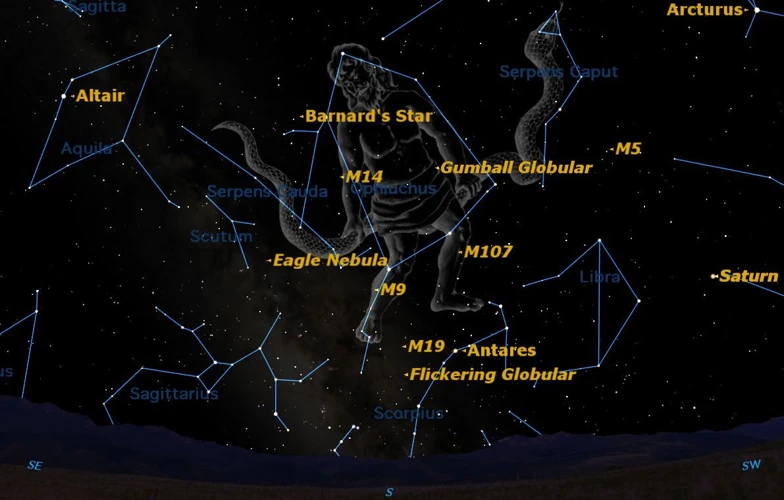
Throughout history, human beings have been fascinated by the wonders of the night sky. The history of astronomy is a captivating journey that spans across cultures and continents. Ancient astronomers, such as the Mesopotamians and Egyptians, observed the celestial bodies and developed intricate systems to track their movements. They believed that the stars and planets had a direct influence on human lives. The Renaissance period marked a shift towards a more scientific approach to astronomy, with Nicolaus Copernicus challenging the geocentric model and proposing a heliocentric view of the solar system. This laid the foundation for modern astronomy, which saw groundbreaking discoveries by scientists like Galileo Galilei and Isaac Newton. Today, astronomers continue to build upon the knowledge of their predecessors using advanced technologies, such as telescopes and space probes, to explore the deepest reaches of the universe. From ancient civilizations gazing at the stars to modern-day space missions, the history of astronomy is a testament to humanity’s curiosity and quest for knowledge.
The Ancient Astronomers
The ancient astronomers were pioneers in the field of astronomy, their observations and theories laying the foundation for our understanding of the cosmos. The Mesopotamians, who inhabited the region of present-day Iraq and Iran, were among the first to develop a systematic approach to studying the stars and planets. They built ziggurats, towering structures that served as astronomical observatories, where they tracked the movements of celestial bodies and created the oldest known star catalogs. These ancient astronomers believed that the heavens held great significance and that the movements of the stars and planets could foretell events on Earth.
In ancient Egypt, astronomy played a crucial role in their religious and cultural practices. The Egyptians observed the motion of the sun, moon, and stars, mapping out the annual cycles and creating calendars to aid in agriculture and religious ceremonies. They aligned their pyramids and temples with celestial events, creating a harmonious connection between the heavens and the earthly realm.
Ancient Greek astronomers, including the likes of Thales, Pythagoras, and Hipparchus, made significant contributions to the field. They sought to understand the fundamental nature of the universe and proposed theories about the Earth’s shape, the motion of celestial bodies, and the existence of other worlds. The most famous of all ancient Greek astronomers, however, was Claudius Ptolemy. He formulated the geocentric model, which placed the Earth at the center of the universe with the sun, moon, and planets orbiting around it.
In ancient China, astronomy held great importance in both practical and philosophical contexts. Astronomers meticulously observed celestial phenomena and recorded their findings in star charts. They used their knowledge to predict eclipses, comets, and other astronomical events, which were believed to have significant implications for the ruling dynasties.
The ancient astronomers contributed immensely to our understanding of the night sky. Their observations, theories, and cultural beliefs laid the groundwork for future advancements in astronomy, paving the way for the remarkable discoveries that would follow in the Renaissance and beyond.
The Renaissance and the Birth of Modern Astronomy
During the Renaissance, a period of great intellectual and cultural awakening, significant advancements were made in the field of astronomy, leading to the birth of modern astronomy as we know it today. One of the key figures during this time was Nicolaus Copernicus, whose revolutionary book “De Revolutionibus Orbium Coelestium” challenged the widely accepted geocentric model of the universe. Copernicus proposed a heliocentric model, with the Sun at the center of the solar system, and this sparked a major paradigm shift in our understanding of the cosmos. His work laid the foundation for future astronomers and inspired a new wave of scientific exploration.
Another influential figure of the Renaissance was Galileo Galilei, a brilliant Italian scientist who made groundbreaking discoveries using the newly invented telescope. Galileo observed the Moon’s craters, the phases of Venus, and the moons of Jupiter, which provided direct evidence against the geocentric model. His observations and experimental approach to science challenged the authority of the Catholic Church and paved the way for the acceptance of heliocentrism.
The Renaissance also saw the development of more precise astronomical instruments, such as the astrolabe and quadrant, which improved accuracy in celestial observations. These advancements allowed astronomers to gather more detailed data and make more accurate calculations.
Isaac Newton, another significant figure during this time, made substantial contributions to astronomy through his laws of motion and theory of universal gravitation. Newton’s laws provided a mathematical framework for understanding how celestial bodies move and interact, further solidifying the foundations of modern astronomy.
The Renaissance period marked a pivotal moment in the history of astronomy. The work of Copernicus, Galileo, and Newton, among others, challenged long-held beliefs and traditional views of the universe. Their groundbreaking discoveries and scientific methods laid the groundwork for the modern study of celestial objects and propelled us into a new era of understanding the cosmos.
Observing the Celestial Bodies

Observing the celestial bodies has been a fundamental aspect of astronomy, allowing us to unravel the mysteries of the universe. One of the most important tools in this pursuit is the telescope, which acts as a window to the heavens. Telescopes come in various types, from refracting telescopes that use lenses to reflectors that utilize mirrors. They enable astronomers to collect and magnify light, revealing distant stars, planets, and galaxies that would otherwise be invisible to the naked eye. Similarly, stargazing has been a popular activity for both amateur astronomers and curious individuals. By simply looking up at the night sky, one can witness the beauty and awe-inspiring nature of the cosmos. From identifying constellations and meteor showers to observing planets and even satellites, stargazing provides a direct connection to the wonders of our universe. Whether through the use of telescopes or the naked eye, observing celestial bodies is a vital part of advancing our understanding of the cosmos and igniting a sense of wonder in all who gaze upon the stars.
The Telescope: A Window to the Universe
The telescope has revolutionized our understanding of the universe, serving as a window to the cosmos. Its invention in the 17th century by astronomers like Galileo Galilei opened up a whole new world of exploration and discovery. Using a combination of lenses or mirrors, telescopes are designed to gather and focus light, allowing us to observe objects that are too far or too faint to be seen with the naked eye. There are different types of telescopes, including refracting telescopes that use lenses to bend and focus light, and reflecting telescopes that use mirrors to reflect and gather light. With the help of telescopes, astronomers have been able to study celestial bodies such as planets, stars, galaxies, and nebulae in great detail. They have observed the moons of Jupiter, the rings of Saturn, the craters on the Moon’s surface, and even distant galaxies billions of light-years away. The Hubble Space Telescope, launched in 1990, has provided breathtaking images of deep space and has contributed to numerous scientific breakthroughs. Astronomers continue to push the limits of telescope technology, with projects like the James Webb Space Telescope on the horizon, which promises to expand our knowledge of the universe even further. The telescope truly is a remarkable tool that has allowed us to peer into the depths of space and unravel the mysteries of our cosmic surroundings.
Stargazing: Exploring the Night Sky
Stargazing allows us to embark on a mesmerizing journey through the vastness of the night sky. It is the art of observing and studying celestial objects, including stars, planets, and galaxies. Armed with a telescope and a willingness to explore, stargazers can witness breathtaking phenomena such as meteor showers, planetary conjunctions, and the dance of the Northern Lights. To enhance the stargazing experience, it’s essential to find a location away from city lights, where the sky is not obscured by light pollution. Once you find a suitable spot, you can use star charts or smartphone apps to identify constellations and locate specific celestial objects. The night sky holds countless wonders, from the bright stars of Orion’s Belt to the striking beauty of the Milky Way. Observing celestial bodies through a telescope reveals intricate details, including the rugged craters on the Moon’s surface and the majestic rings of Saturn. Stargazing offers a chance to feel connected to the vastness of the universe and to ponder the mysteries that lie beyond our reach. So grab your telescope and embark on a celestial adventure, exploring the wonders of the night sky.
The Inner Workings of Stars
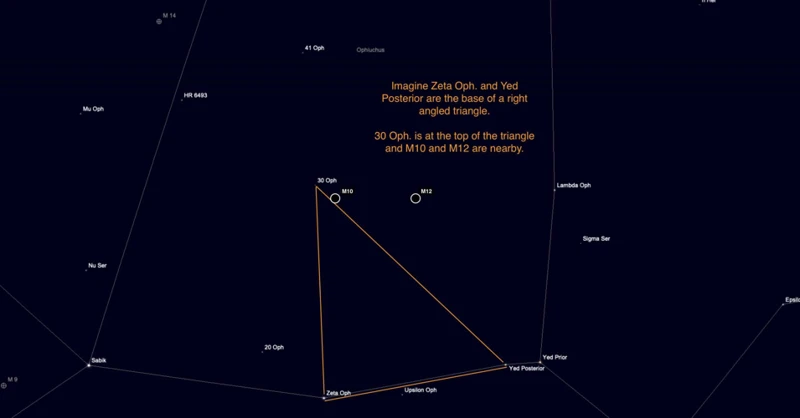
Stars, those brilliant celestial objects that light up the night sky, hold within them incredible mysteries waiting to be unraveled. Understanding the inner workings of stars is a fundamental aspect of astronomy. Stars are massive spheres of hot plasma that generate energy through nuclear fusion in their cores. Their life cycle begins with the gravitational collapse of a molecular cloud, forming a protostar. As the protostar contracts, the pressure and temperature rise until nuclear fusion ignites, marking the birth of a main sequence star. These stars, like our own Sun, undergo a delicate balance between inward gravitational forces and outward radiation pressure. Over time, stars exhaust their nuclear fuel and enter different stages, depending on their mass. Smaller stars, like red dwarfs, eventually become white dwarfs, while more massive stars lead to explosive supernovae, leaving behind dense remnants such as neutron stars or black holes. This intricate dance of stellar evolution is crucial for the formation of new galaxies and the synthesis of elements essential for life. By studying the lifecycle and classifications of stars, scientists gain valuable insights into the vast Cosmos we inhabit and the extraordinary processes occurring within the heart of these celestial giants.
The Life Cycle of Stars
Stars, the celestial objects that light up our night sky, go through a fascinating and intricate life cycle. This journey begins with the birth of a star, which occurs within vast clouds of gas and dust called nebulae. Under the influence of gravity, these clouds collapse, causing the material to become denser and hotter. Eventually, nuclear fusion ignites, and a protostar is born. As the protostar continues to gather mass, it enters the main sequence phase, where it remains for the majority of its life. During this phase, the star’s energy is generated by nuclear fusion in its core, where hydrogen atoms combine to form helium, releasing a tremendous amount of energy in the process. The duration of the main sequence phase depends on the initial mass of the star. Smaller stars, known as red dwarfs, can remain in this phase for billions of years, while more massive stars have shorter main sequence lifetimes.
As a star exhausts its hydrogen fuel, it undergoes significant changes. In the next phase, known as the red giant phase, the star expands in size, becoming larger and brighter. The core of the star contracts, causing the outer layers to expand and cool, leading to the characteristic red color. During this phase, certain elements heavier than helium can undergo fusion, producing energy for a limited time.
For stars that are several times more massive than our Sun, the final stages of their lives are marked by an explosive event called a supernova. This powerful explosion can briefly outshine an entire galaxy and release enormous amounts of energy. The remnants of a supernova can form either a neutron star or a black hole, depending on the mass of the original star.
Smaller stars, on the other hand, undergo a less dramatic transformation. As they exhaust their nuclear fuel, they shed their outer layers, creating a beautiful, glowing shell of gas and dust called a planetary nebula. Eventually, all that remains is a small, dense, and incredibly hot core called a white dwarf, which gradually cools over billions of years.
The life cycle of stars provides a glimpse into the immense power and incredible processes occurring within these celestial objects. From the birth of a star within a molecular cloud to its explosive death as a supernova, each stage is a testament to the awe-inspiring forces at work in the universe. Understanding the life cycle of stars not only illuminates our knowledge of stellar evolution but also helps us comprehend the origins and composition of the elements that make up our world and the cosmos as a whole.
Stellar Classification: Understanding Different Types of Stars
Stellar classification is a fundamental aspect of astronomy that helps us understand the different types of stars and their characteristics. Stars are categorized based on their temperature, size, brightness, and composition. The most commonly used classification system is the Morgan-Keenan (MK) system, which places stars into spectral types based on their spectral lines. The spectral types range from O, the hottest and brightest stars, to M, the coolest and dimmest stars. Within each spectral type, stars are further divided into subclasses denoted by numbers (0-9), with 0 representing the hottest and 9 representing the coolest. This classification system allows astronomers to categorize and compare stars based on their unique features. For example, O-type stars are massive and emit intense ultraviolet radiation, while M-type stars are smaller and cooler, often appearing reddish in color. Each spectral type exhibits distinct characteristics, such as the presence of specific elements in their spectra. By studying stellar classification, astronomers gain insights into the lifecycle of stars, their energy production, and how they contribute to the evolution of galaxies. This classification system has been crucial in identifying and studying various stellar phenomena, including binary star systems, red giants, and even supernovae. Stellar classification provides a valuable framework for astronomers to understand the diversity and behavior of stars throughout the universe.
Exploring Our Solar System
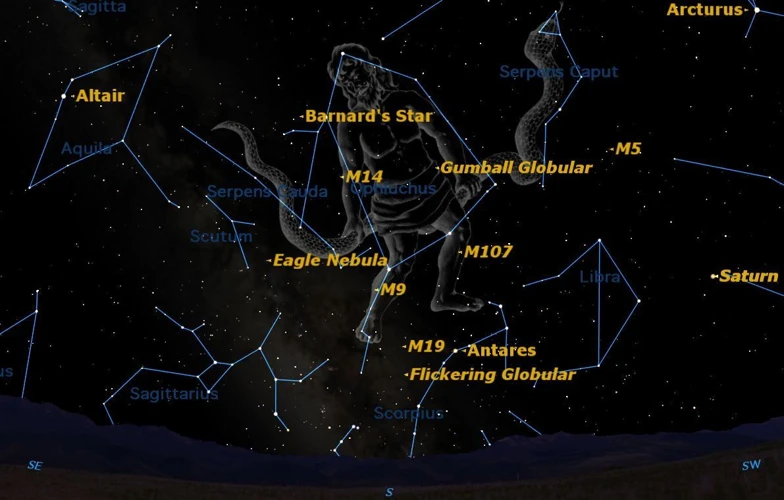
Our solar system, nestled within the vast expanse of the universe, is a fascinating realm waiting to be explored. At the heart of our solar system is the Sun, a dazzling star that provides the energy necessary to sustain life on Earth. Orbiting around the Sun are eight planets, each with its unique characteristics and mysteries. From the rocky terrain of Mercury to the gaseous giants like Jupiter and Saturn, each planet offers a glimpse into the diverse nature of our cosmic neighbors. The exploration of our solar system has been driven by a combination of robotic missions and human space exploration. NASA’s Voyager probes have ventured beyond the outer planets, sending back valuable data and images, while missions like the Mars rovers have provided us with a closer look at the Red Planet. As we continue to unravel the secrets of our solar system, we gain a deeper understanding of our place in the universe and how celestial bodies shape our existence. Join us on this cosmic journey as we embark on a tour of our solar system and uncover the wonders that await us.
The Sun: Our Vital Star
The Sun, our vital star, is a magnificent celestial body that plays a crucial role in sustaining life on Earth. With its enormous mass and powerful gravitational pull, the Sun serves as the ultimate energy source for our planet. It radiates intense heat and light, providing warmth and illumination for all living organisms. The Sun’s core is a hot, dense region where nuclear fusion reactions occur, generating an immense amount of energy. Through this process, hydrogen atoms convert into helium, releasing vast quantities of energy in the form of light and heat. The energy produced by the Sun is essential for photosynthesis, the process by which plants convert sunlight into chemical energy, ultimately supporting the entire food chain. Additionally, the Sun’s gravitational pull keeps the planets in our solar system in their respective orbits. It holds everything in balance, maintaining the stability of our cosmic neighborhood. Studying the Sun provides valuable insights into stellar evolution, solar activity, and space weather, which can impact our technological systems and satellites. While the Sun is essential for our existence, it is crucial to remember to observe it safely, taking precautions to protect our eyes from its intense radiance. The Sun is a remarkable star that illuminates our lives in more ways than one, reminding us of our place in the vastness of the universe.
The Planets: A Tour of our Cosmic Neighbors
The Planets: A Tour of our Cosmic Neighbors takes us on a journey through our very own solar system. It is home to eight magnificent planets, each with its unique characteristics and mysteries waiting to be unraveled.
1. Mercury: As the closest planet to the Sun, Mercury is a rocky world with a harsh and inhospitable environment. Its surface is scarred with craters and experiences extreme temperature fluctuations.
2. Venus: Known as Earth’s “sister planet,” Venus is similar in size but has a completely different atmosphere. It is shrouded in thick clouds of sulfuric acid, creating a runaway greenhouse effect that makes it the hottest planet in our solar system.
3. Earth: Our home, also known as the Blue Planet, is a haven for life as we know it. With its unique combination of water, atmosphere, and suitable temperatures, it supports a rich diversity of flora and fauna.
4. Mars: Referred to as the “Red Planet,” Mars has long captured the fascination of astronomers and science-fiction enthusiasts alike. It has a thin atmosphere and dry, barren landscapes, but the potential for past or present microbial life has raised exciting questions.
5. Jupiter: The largest planet in our solar system, Jupiter is a gas giant with a mesmerizing system of colorful bands and swirling storms, most notably the Great Red Spot—a giant storm that has been raging for centuries.
6. Saturn: Best known for its iconic ring system, Saturn’s rings are made up of countless icy particles orbiting the planet. Its beauty and distinctive features make it one of the most captivating sights in the night sky.
7. Uranus: This gas giant is unique for its tilt, with its axis of rotation at a nearly 90-degree angle. Uranus appears to roll on its side as it travels around the Sun, making it a fascinating and mysterious planet.
8. Neptune: The farthest planet from the Sun, Neptune is a frigid and windy world. It boasts the strongest winds in the solar system and is home to a vivid blue atmosphere.
Each planet in our solar system has its own story to tell, offering scientists valuable insights into the formation and evolution of planetary systems. Exploring these cosmic neighbors not only expands our knowledge of the universe but also ignites our curiosity about the possibility of finding life beyond Earth.
The Mystery of Black Holes

Black holes, one of the most intriguing phenomena in the universe, continue to baffle astronomers and physicists alike. These cosmic entities possess such immense gravitational force that nothing, not even light, can escape their grasp. The mystery of black holes lies in their formation and behavior. According to current theories, black holes are born from the remnants of massive stars that have collapsed under their own gravity. When this occurs, a singularity is formed, a point of infinite density where the laws of physics we know break down. Surrounding the singularity is the event horizon, the point of no return beyond which anything that enters is trapped forever. While we cannot directly observe black holes due to their light-swallowing nature, scientists have used indirect methods to gather evidence and expand our understanding. Recent discoveries, including the detection of gravitational waves, have provided compelling evidence for the existence of black holes and opened up new avenues for research. The study of black holes not only challenges our understanding of the laws of physics but also offers insights into the nature of space, time, and the universe itself. Exploring these enigmatic cosmic entities is like venturing into uncharted territory, where the laws of physics take on an entirely different dimension.
Understanding Black Holes: Theoretical Concepts
Understanding Black Holes: Theoretical Concepts requires delving into the fascinating and mind-boggling realm of these enigmatic cosmic objects. According to current scientific theories, a black hole is formed when a massive star collapses under its own gravitational force, creating a region in space where gravity is so intense that nothing, not even light, can escape its grasp. The concept of event horizon is crucial in understanding black holes. The event horizon is a boundary surrounding the black hole where the escape velocity exceeds the speed of light. Any object that crosses this boundary is believed to be forever trapped within the black hole’s gravitational pull. Another intriguing aspect of black holes is their singularity, a point of infinite density at the center of the black hole where the laws of physics break down. While the nature of this singularity remains a topic of speculation, it is widely believed that it is a point of infinite space-time curvature. Black holes also have properties such as mass and angular momentum, which are described by the no-hair theorem, implying that all other information about the star that formed the black hole is lost, except for these properties. Exploring the theoretical concepts behind black holes has fueled scientific investigations and mathematical models that deepen our understanding of the universe.
Observational Evidence and Recent Discoveries
Observational evidence in astronomy plays a crucial role in shaping our understanding of the universe. Scientists continuously gather data from telescopes and other advanced instruments to uncover new discoveries and deepen our knowledge of celestial phenomena. Recent years have brought about significant breakthroughs in the field, expanding our understanding of the cosmos. For example, the discovery of gravitational waves, predicted by Einstein’s theory of general relativity, provided direct evidence of the existence of these ripples in space-time caused by massive cosmic events such as colliding black holes. This groundbreaking observation opened up a new window of exploration and further confirmed our understanding of the fundamental workings of the universe. Additionally, advancements in technology have allowed scientists to detect and study exoplanets, planets outside our own solar system. By analyzing the light of distant stars, astronomers can identify telltale signs of planets orbiting them, providing us with valuable insights into the potential for habitable worlds beyond our own. These discoveries not only fuel our sense of wonder but also contribute to our understanding of the vastness and diversity of the cosmos. As scientists continue to refine their observational techniques and explore new frontiers, the possibilities for uncovering even more awe-inspiring discoveries in astronomy are limitless.
Beyond Our Galaxy: Exploring the Cosmos
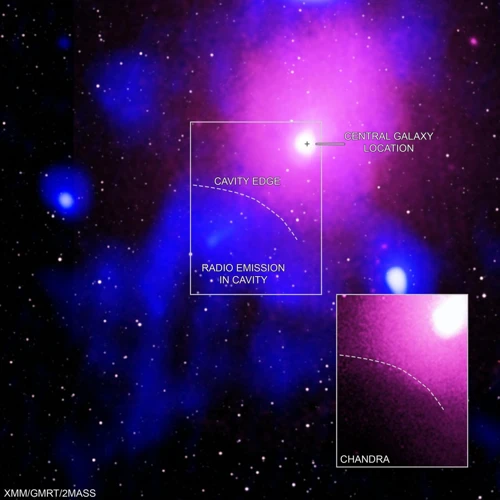
Beyond our own galaxy, the cosmos holds a vast expanse of awe-inspiring wonders waiting to be explored. Galaxies, the building blocks of the universe, come in a variety of shapes and sizes, each containing billions or even trillions of stars. These galactic giants, like the Milky Way, host countless celestial bodies, including nebulae, star clusters, and massive black holes. The study of galaxies has expanded our understanding of cosmic evolution and provided valuable insights into the formation and structure of the universe. Yet, there is still much to uncover beyond our known borders. Cosmic expansion and the enigmatic nature of dark matter continue to captivate the minds of astronomers, pushing the boundaries of our knowledge. With telescopes and advanced technology at our disposal, we continue to embark on missions to unravel the mysteries of the cosmos. The exploration of our universe is an ongoing endeavor that fuels our curiosity and drives us to seek answers to the fundamental questions of our existence.
Galaxies: The Building Blocks of the Universe
Galaxies are the building blocks of the universe, vast collections of stars, planets, gas, and dust held together by gravitational forces. These cosmic entities come in different shapes, sizes, and formations, each containing billions or even trillions of stars. The study of galaxies is a crucial aspect of astronomy, providing insights into the formation and evolution of the universe itself. The classification of galaxies is based on their shape and structure, with three main types: spiral galaxies, elliptical galaxies, and irregular galaxies.
1. Spiral Galaxies: These galaxies have a distinctive spiral arm structure that radiates from a central bulge. The spiral arms are composed of young stars, interstellar gas, and dust. The Milky Way, our home galaxy, is a prime example of a spiral galaxy. It is estimated to contain between 100 and 400 billion stars.
2. Elliptical Galaxies: These galaxies have a more rounded or elliptical shape, lacking the spiral arms seen in spiral galaxies. They are often redder in color, indicating an older population of stars. Elliptical galaxies can range in size from small dwarf galaxies to massive supergiant galaxies.
3. Irregular Galaxies: As the name suggests, irregular galaxies do not have a distinct shape or structure. They may appear chaotic or fragmented, lacking the symmetry found in spiral or elliptical galaxies. Irregular galaxies often result from gravitational interactions or mergers between galaxies.
Studying galaxies provides astronomers with valuable information about the age of the universe, the distribution of matter, and the processes involved in galaxy formation and evolution. They are also instrumental in understanding the concept of dark matter, an elusive substance that makes up a significant portion of the universe’s mass. Through the use of telescopes and sophisticated observatories, scientists continue to explore and uncover the mysteries surrounding galaxies, offering us a glimpse into the vastness and complexity of the cosmos.
Cosmic Expansion and Dark Matter
Cosmic expansion and dark matter are two fascinating concepts that play a crucial role in our understanding of the universe. The idea of cosmic expansion stems from the observation that the galaxies in our universe are moving away from each other. This discovery, first made by Edwin Hubble in the 1920s, led to the formulation of the Big Bang theory, which suggests that the universe originated from a highly dense and hot state and has been expanding ever since. The expansion of the universe is driven by a mysterious force called dark energy, which counteracts the gravitational pull between galaxies and causes the space between them to stretch. However, the visible matter that we can see, such as stars and galaxies, only accounts for a small fraction of the total mass of the universe. The majority of the mass is believed to be composed of dark matter, an elusive substance that does not interact with light and has not yet been directly detected. Scientists infer the existence of dark matter through its gravitational effects on visible matter and the way it shapes the large-scale structure of the universe. Understanding the nature of dark matter is one of the key puzzles in modern astrophysics, and ongoing research aims to shed light on its composition and properties. By studying cosmic expansion and dark matter, scientists are piecing together the intricate puzzle of the universe’s evolution and composition, uncovering the hidden forces that shape our cosmic landscape.
Unveiling the Secrets of the Universe
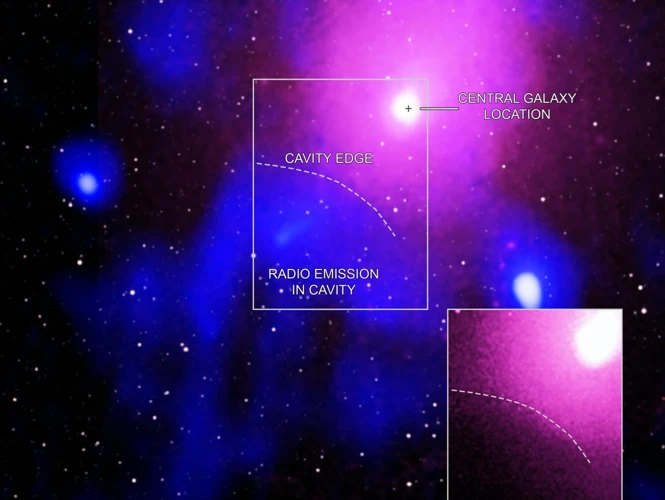
Unveiling the secrets of the universe is a quest that has captivated scientists and enthusiasts alike. With each new discovery, we gain a deeper understanding of the cosmos and our place within it. One fascinating area of exploration is the study of exoplanets, which are planets that orbit stars outside our own solar system. Through meticulous observations and advanced technology, astronomers have identified thousands of exoplanets, some of which may have conditions suitable for life. This has reignited our curiosity about the possibility of extraterrestrial life and the potential diversity of other worlds. Another area of research that has revolutionized our understanding of the universe is the detection of gravitational waves. These cosmic ripples, predicted by Albert Einstein, provide insights into the most extreme events in the universe, such as the collision of black holes and the merging of neutron stars. By analyzing these gravitational waves, scientists are able to glean valuable information about the nature of space-time and the origins of our universe. As we continue to explore and unravel the mysteries of the cosmos, the future of astronomy holds promise for even more awe-inspiring discoveries.
Exoplanets: Hunting for Other Worlds
The search for exoplanets, or planets outside of our solar system, has become one of the most exciting areas of astronomical research. With the advancement of technology and the development of sophisticated telescopes, astronomers have been able to detect and study exoplanets in unprecedented detail. These distant worlds offer a glimpse into the diversity of planetary systems and may hold the key to understanding the prevalence of life in the universe.
One method used to detect exoplanets is the transit method. This involves observing a star for regular dips in brightness, which occur when an exoplanet passes in front of it from our perspective. By measuring the duration and frequency of these transits, scientists can determine the size, orbit, and even atmospheric composition of the exoplanet. The Kepler Space Telescope, launched by NASA in 2009, has been instrumental in discovering thousands of exoplanets using this method.
Another technique is the radial velocity method, which detects the slight wobble of a star caused by the gravitational pull of an orbiting exoplanet. By observing the periodic variations in a star’s radial velocity, scientists can infer the presence and characteristics of an exoplanet, such as its mass and distance from its host star. The High Accuracy Radial Velocity Planet Searcher (HARPS) instrument, installed at the La Silla Observatory in Chile, is one of the most successful instruments using this method.
In recent years, astronomers have been particularly interested in finding potentially habitable exoplanets, often referred to as “Goldilocks planets” or “exoplanets in the habitable zone.” This is the region around a star where conditions may be just right for liquid water to exist on the planet’s surface, a crucial ingredient for life as we know it. The discovery of exoplanets such as Proxima b, orbiting the nearest star to our solar system, and TRAPPIST-1e, part of a seven-planet system, have sparked great interest and further exploration.
The quest to hunt for other worlds is not only driven by curiosity but also by the desire to answer fundamental questions about our place in the universe. Are we alone? Is Earth unique? By studying exoplanets, scientists hope to gain insights into the formation and evolution of planetary systems, the conditions necessary for life to arise, and the potential for life beyond our own planet.
Even though the search for exoplanets has already yielded exciting discoveries, it is still in its infancy. Future missions and telescopes, such as NASA’s James Webb Space Telescope and the European Space Agency’s PLATO mission, will continue to expand our knowledge and push the boundaries of exoplanet exploration. With each new exoplanet detection, our understanding of the universe and the possibilities it holds continues to grow. The hunt for other worlds is an ongoing adventure that captivates scientists and stargazers alike, as we strive to unlock the mysteries of the cosmos.
Internal link: exploring-astrological-traits-famous-ophiuchus-personalities
Gravitational Waves: Ripples in Space-Time
Gravitational waves are an intriguing phenomenon that has recently captured the attention of the scientific community and the general public alike. These waves are ripples in the fabric of space-time itself, caused by the acceleration of massive objects, such as black holes or neutron stars. According to Albert Einstein’s theory of general relativity, massive objects create a gravitational field that distorts the fabric of space and time around them. When these objects accelerate or change their motion, they create waves that propagate through the universe at the speed of light, carrying invaluable information about the nature of the cosmos.
Gravitational waves were first predicted by Einstein in 1916, but it was not until 2015 that they were directly detected for the first time by the Laser Interferometer Gravitational-Wave Observatory (LIGO) team. This groundbreaking discovery confirmed a major prediction of Einstein’s theory and opened up a new window for studying the universe. Since then, several other gravitational wave events have been observed, providing insights into the mergers of black holes and neutron stars, as well as the nature of gravity itself.
The detection of gravitational waves has revolutionized our understanding of the universe and has created new avenues for exploration in astronomy and astrophysics. Scientists can now use these waves to study extreme cosmic events, such as the collision of black holes and the formation of new celestial objects. Gravitational wave astronomy allows us to probe the mysteries of the universe in ways that were previously impossible, providing a unique perspective on the nature of space, time, and gravity.
With ongoing advancements in technology and the construction of more sensitive detectors, the field of gravitational wave astronomy is poised for further discoveries and insights into the workings of the cosmos. As scientists continue to unravel the secrets of these ripples in space-time, we gain a deeper understanding of the fundamental forces that shape our universe and our place within it.
The Future of Astronomy
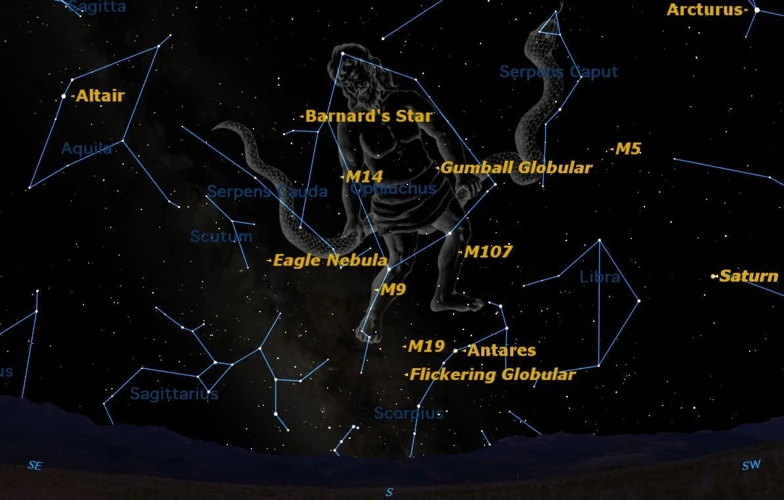
As we look to the future, the field of astronomy holds tremendous potential for further exploration and discovery. Advancements in technology and space exploration have opened up new avenues for studying the cosmos. One of the most exciting developments is the use of space telescopes, like the Hubble Space Telescope and the upcoming James Webb Space Telescope, which allow astronomers to capture images and data from distant galaxies with unprecedented clarity. These instruments have revolutionized our understanding of the universe and will continue to expand our knowledge in the years to come. Additionally, the search for extraterrestrial life remains a tantalizing frontier in astronomy, as scientists investigate the potential habitability of exoplanets and analyze the possibility of finding life beyond Earth. The future also holds the promise of new discoveries through the detection of gravitational waves, ripples in space-time caused by massive celestial events. This emerging field of study provides a unique window into the cosmos and offers opportunities for groundbreaking insights into the nature of the universe. As we gaze towards the future of astronomy, we are filled with a sense of awe and wonder, knowing that there are still countless mysteries waiting to be unraveled.
Space Telescopes: Expanding our View
Space telescopes have revolutionized our understanding of the universe by providing us with a view that is beyond the capabilities of ground-based observatories. These advanced instruments have opened up new frontiers in astronomy, allowing us to observe celestial objects and phenomena with unparalleled clarity and precision. One of the most iconic space telescopes is the Hubble Space Telescope. Launched in 1990, it has captured breathtaking images of distant galaxies, nebulae, and other cosmic wonders. With its ability to observe in the ultraviolet, visible, and near-infrared wavelengths, the Hubble has unveiled the beauty and complexity of the universe in unprecedented detail. The Hubble has also played a crucial role in determining the rate of expansion of the universe, providing key evidence for the existence of dark energy. Another notable space telescope is the Kepler Space Telescope, which was specifically designed to search for exoplanets in our galaxy. Kepler has discovered thousands of confirmed and potential exoplanets, revolutionizing our understanding of planetary systems beyond our own. By studying the frequency and characteristics of exoplanets, scientists have gained insights into the prevalence of Earth-like worlds and the potential for extraterrestrial life. As technology continues to advance, new generations of space telescopes are being developed. The James Webb Space Telescope, set to launch in 2021, promises to expand our view even further, with its advanced infrared capabilities that will allow us to peer through cosmic dust clouds and observe the earliest galaxies in the universe. Space telescopes have become indispensable tools for astronomers, pushing the boundaries of our knowledge and inspiring future generations of scientists to explore the depths of the cosmos.
The Search for Extraterrestrial Life
The search for extraterrestrial life has been a topic of great interest and speculation for centuries. Scientists and astronomers have long pondered the possibility of life existing beyond our planet, and in recent years, advancements in technology and observational capabilities have brought us closer than ever to finding potential evidence. The search for extraterrestrial life encompasses various methods and approaches, including the study of extremophiles on Earth, the exploration of Mars and other celestial bodies in our solar system, and the detection of exoplanets in other star systems. One of the most notable endeavors in this quest is the Search for Extraterrestrial Intelligence (SETI), which involves scanning the skies for signals from intelligent civilizations. SETI has utilized radio telescopes and advanced algorithms to analyze vast amounts of data in the hopes of detecting signals that could be indicative of alien life forms. Another approach is the study of exoplanets, which are planets orbiting stars outside of our solar system. The discovery of thousands of exoplanets in recent years has fueled optimism that the conditions for life may exist elsewhere in the universe. Scientists analyze the composition of exoplanet atmospheres and search for signatures of molecules that could indicate the presence of life. While concrete evidence of extraterrestrial life has yet to be found, the search continues to push the boundaries of our knowledge and ignite curiosity about our place in the cosmos. As technology advances and our understanding of the universe deepens, the search for extraterrestrial life remains a captivating and ongoing pursuit.
Conclusion
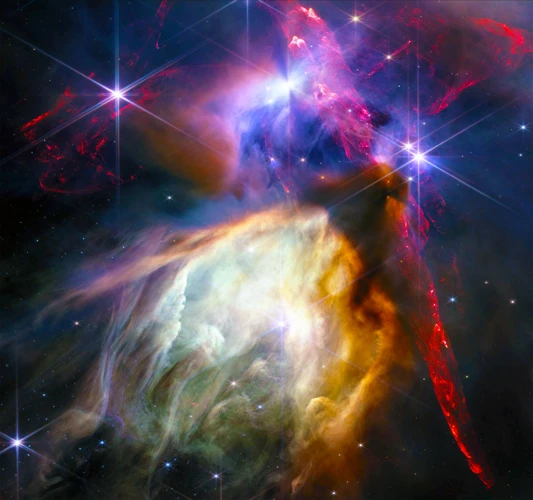
In conclusion, the study of astronomy provides us with a deeper understanding of the vast and awe-inspiring universe we inhabit. From the ancient astronomers pondering the mysteries of the night sky to the modern-day scientists unlocking the secrets of black holes and exoplanets, the field of astronomy continually expands our knowledge and pushes the boundaries of human exploration. As technology advances, our ability to observe and study celestial objects becomes more sophisticated, allowing us to unravel the mysteries of our cosmic neighbors and even search for signs of extraterrestrial life. The future of astronomy holds exciting possibilities, with space telescopes like the Hubble and the forthcoming James Webb Space Telescope set to revolutionize our view of the universe. Furthermore, the hunt for exoplanets and the discovery of gravitational waves continue to reshape our understanding of the cosmos. As we stand on the precipice of new discoveries and advancements in the field, we can only anticipate the revelations that await us in the vast expanse of space. The science of astronomy will undoubtedly continue to captivate and inspire generations to come, fostering a deeper appreciation for the wonders of the universe and our place within it.
Frequently Asked Questions

1. What is the oldest recorded astronomical observation?
The oldest recorded astronomical observation dates back to ancient Mesopotamia, where clay tablets dating to around 700 BCE contain detailed records of celestial events such as eclipses and the movements of the planets.
2. Who was the first person to propose that the Earth revolves around the Sun?
Nicolaus Copernicus, a Renaissance-era mathematician and astronomer, was the first person to propose a heliocentric model of the solar system, where the Earth and other planets revolve around the Sun.
3. How do astronomers study faraway objects in the universe?
Astronomers study faraway objects in the universe by using telescopes equipped with advanced imaging technologies, such as spectrographs and cameras, to capture and analyze the light emitted by these objects. They can also use space-based telescopes to observe celestial bodies without the interference of Earth’s atmosphere.
4. What causes stars to die?
Stars die when they exhaust their nuclear fuel. Smaller stars like the Sun end their lives by shedding their outer layers and becoming white dwarfs. Larger stars undergo a more explosive process called a supernova, where they release a tremendous amount of energy and can even collapse into a dense object known as a neutron star or a black hole.
5. How do scientists classify different types of stars?
Scientists classify stars based on their temperature, brightness, and spectral characteristics. This classification system, known as the stellar classification, categorizes stars into different types, such as O, B, A, F, G, K, and M, with O being the hottest and M being the coolest.
6. What is the Sun primarily composed of?
The Sun is primarily composed of hydrogen and helium gases. These elements make up more than 99% of its mass. The Sun’s intense gravitational forces generate heat and energy through nuclear fusion reactions.
7. Are there planets outside of our solar system?
Yes, there are planets outside of our solar system, and they are called exoplanets. These planets orbit stars other than the Sun and have been discovered using various methods, including the transit method and the radial velocity method.
8. How do black holes form?
Black holes form when massive stars collapse under their own gravitational pull, creating a region in space with extremely strong gravitational forces. Anything that crosses the event horizon of a black hole, known as the point of no return, is trapped and cannot escape.
9. What is dark matter, and why is it called “dark”?
Dark matter is a form of matter that does not emit, absorb, or reflect light, making it invisible and “dark” in nature. It is called “dark” because its presence can only be inferred through its gravitational effects on visible matter and the structure of the universe.
10. Can life exist on other planets?
While no definitive evidence of extraterrestrial life has been found yet, scientists believe that the conditions for life might exist on other planets or moons within our own solar system and beyond. Ongoing research and future space missions aim to explore these possibilities and search for signs of life beyond Earth.
References
Frequently Asked Questions

FAQ 1: Is astronomy the same as astrology?
No, astronomy and astrology are two different fields of study. Astronomy is a scientific discipline that focuses on the observation and understanding of celestial objects, while astrology is a belief system that attempts to interpret the influence of celestial bodies on human affairs.
FAQ 2: How long has astronomy been studied?
Astronomy has been studied for thousands of years. Ancient civilizations such as the Egyptians, Greeks, and Mayans observed and documented celestial events, laying the foundations for modern astronomy.
FAQ 3: How do astronomers observe celestial bodies?
Astronomers use various tools and techniques to observe celestial bodies. They rely on telescopes, both on Earth and in space, to capture light from distant objects. They also use spectroscopy, which analyzes the light emitted or absorbed by celestial bodies, to gather information about their composition and temperature.
FAQ 4: What is the life cycle of stars?
Stars go through several stages in their life cycle. They begin as dense clouds of gas and dust called nebulae. Over time, gravity causes the cloud to collapse, forming a protostar. The protostar then ignites nuclear fusion in its core, becoming a main sequence star. Depending on its mass, a star may evolve into a red giant, a white dwarf, a neutron star, or a black hole.
FAQ 5: What are exoplanets?
Exoplanets are planets that orbit stars outside our solar system. These planets come in various sizes and compositions, and their discovery has provided valuable insights into the prevalence of other worlds in the universe.
FAQ 6: Why are space telescopes important in astronomy?
Space telescopes are crucial in astronomy because they allow observations to be conducted outside the Earth’s atmosphere. This eliminates the distortion caused by Earth’s atmosphere and enables scientists to capture clearer and more detailed images of distant objects.
FAQ 7: What are gravitational waves?
Gravitational waves are ripples in the fabric of space-time. They are produced by the acceleration of massive objects, such as black holes or neutron stars. The detection of gravitational waves has opened up a new way of observing and understanding the universe.
FAQ 8: What is dark matter?
Dark matter is a mysterious substance that does not emit, absorb, or reflect light, making it invisible to direct detection. However, its presence is inferred through its gravitational effects on visible matter. Its exact nature is still unknown, but it is believed to make up a significant portion of the total mass in the universe.
FAQ 9: Are there other galaxies besides the Milky Way?
Yes, there are billions of other galaxies in the universe besides our own Milky Way. Galaxies come in various shapes and sizes and are composed of millions to billions of stars, as well as gas, dust, and dark matter.
FAQ 10: Is there any evidence for the existence of black holes?
Yes, there is compelling evidence for the existence of black holes. Observations have shown the effects of their strong gravitational pull on surrounding matter, such as stars orbiting an invisible object. Additionally, the detection of gravitational waves, which are predicted by Einstein’s theory of general relativity, provides further confirmation of the existence of black holes.






